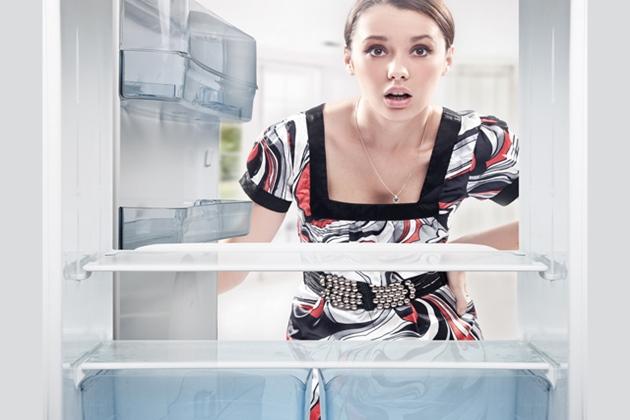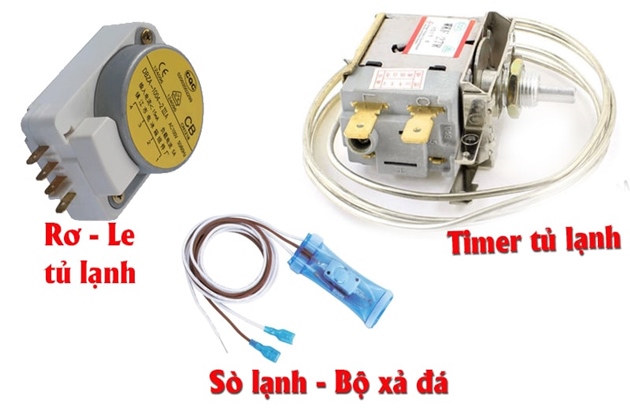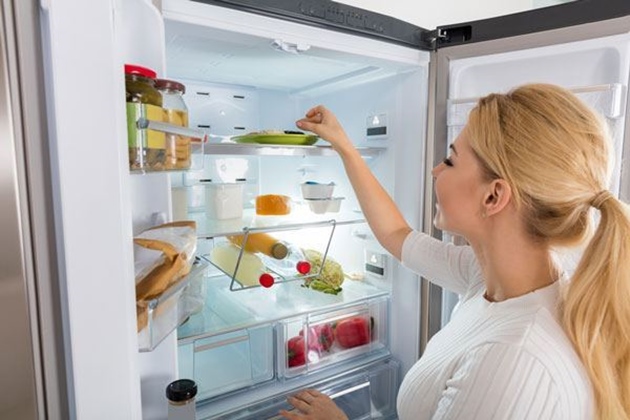Learn about the reasons why the refrigerator freezes and how it operates when it freezes like that, and the quickest and simplest way to solve this phenomenon.
Impact of freezer frost
– The refrigerator will cool less due to frost blocking the heat exchange between the copper pipe gas and the flowing air outside and obstructing the airflow through the evaporator.
– Freezer frost will consume more electricity as it has to operate continuously to cool according to the set level.
– Failure to freeze food at low temperatures leads to thawing and water leakage in the refrigerator.
– Hindering the cooling capacity in the fresh food compartment makes the stored food more susceptible to spoilage, quick expiration, and waste.

Reasons for refrigerator frosting
The main reason for refrigerator frosting is a faulty defrosting unit. This component helps prevent frost from sticking to the refrigerator walls and the evaporator. One of the following four components of the defrosting unit can directly affect the frosting of the ice cube compartment if it is damaged.

1. Timer
This is the component that switches the electricity from cooling to defrosting thanks to a small electric motor in the timer that rotates a preset switching gear. If the electric motor fails to switch, the defrosting mode will be interrupted, causing the defrosting process to be interrupted. The causes of this phenomenon may be a burned motor coil or a jammed worn gear.
2. Defrost Heater
The defrost heater, located behind the freezer compartment, is actually a frost removal relay that is clamped onto the evaporator, sensing the frost that covers the evaporator. It ensures that the defrost heater operates when there is a full frost covering the evaporator, eliminating the situation of the heating resistor heating up the evaporator unnecessarily (there is no frost on the evaporator but the heating resistor still operates). When the defrost heater is faulty, it will prevent the heating resistor from operating when needed, or it will not prevent the heating resistor from operating when frost covers the evaporator.
3. Defrost Thermostat
This is the main component that generates heat to melt the frost that sticks to the evaporator. In case the timer or the defrost heater fails, the defrost thermostat cannot operate, causing the frost layer to stick to the evaporator.
4. Thermal Fuse
It is a component in the defrosting electrical circuit that completely cuts off the electrical circuit when the evaporator temperature rises uncontrollably. If the thermal fuse is blown, the defrosting component will stop working, causing the refrigerator to freeze.
5. Moist Air Entering the Ice Cube Compartment
This is also one of the causes of frost in the refrigerator ice cube compartment. Moist air can enter due to the refrigerator door being open for too long, frequent openings for a long time, or worn-out door seals, resulting in a non-sealing door, allowing moist air to enter and then condense and freeze into frost.
How to fix a frosted refrigerator
Usually, to ensure the stable cooling of the refrigerator, when one of the devices is faulty, it can be replaced with a new device or replaced with the entire system to ensure the correct operation of the equipment. The cost of the defrosting system also depends on each refrigerator brand.
In addition, check the door seal, it is advisable to replace it to ensure that the refrigerator is sealed tightly, prevents moist air from entering, and also saves energy.
How to clean the refrigerator when frosted
Step 1: Disconnect the power to the refrigerator, remove all food from the compartments, wrap them in thermal bags to keep them cool and ventilated.
Step 2: Remove the refrigerator trays and use newspaper to cover the floor and surrounding areas to prevent water from the melted frost from flowing out, making it easier to clean up later. You can use a hairdryer to speed up the defrosting process.

Step 3: Wait for the frost to melt, clean the food trays to ensure food safety. Let them dry.
Step 4: After the frost has completely melted, use a clean cloth to wipe the ice layer in the refrigerator, clean the refrigerator, and let it dry before putting the trays back in their original positions.

Step 5: Close the refrigerator door, plug in the power, and let the refrigerator operate for 30 minutes before putting the food back in, arranging it in separate compartments for cooked and raw food, and fruits and vegetables for storage.

































